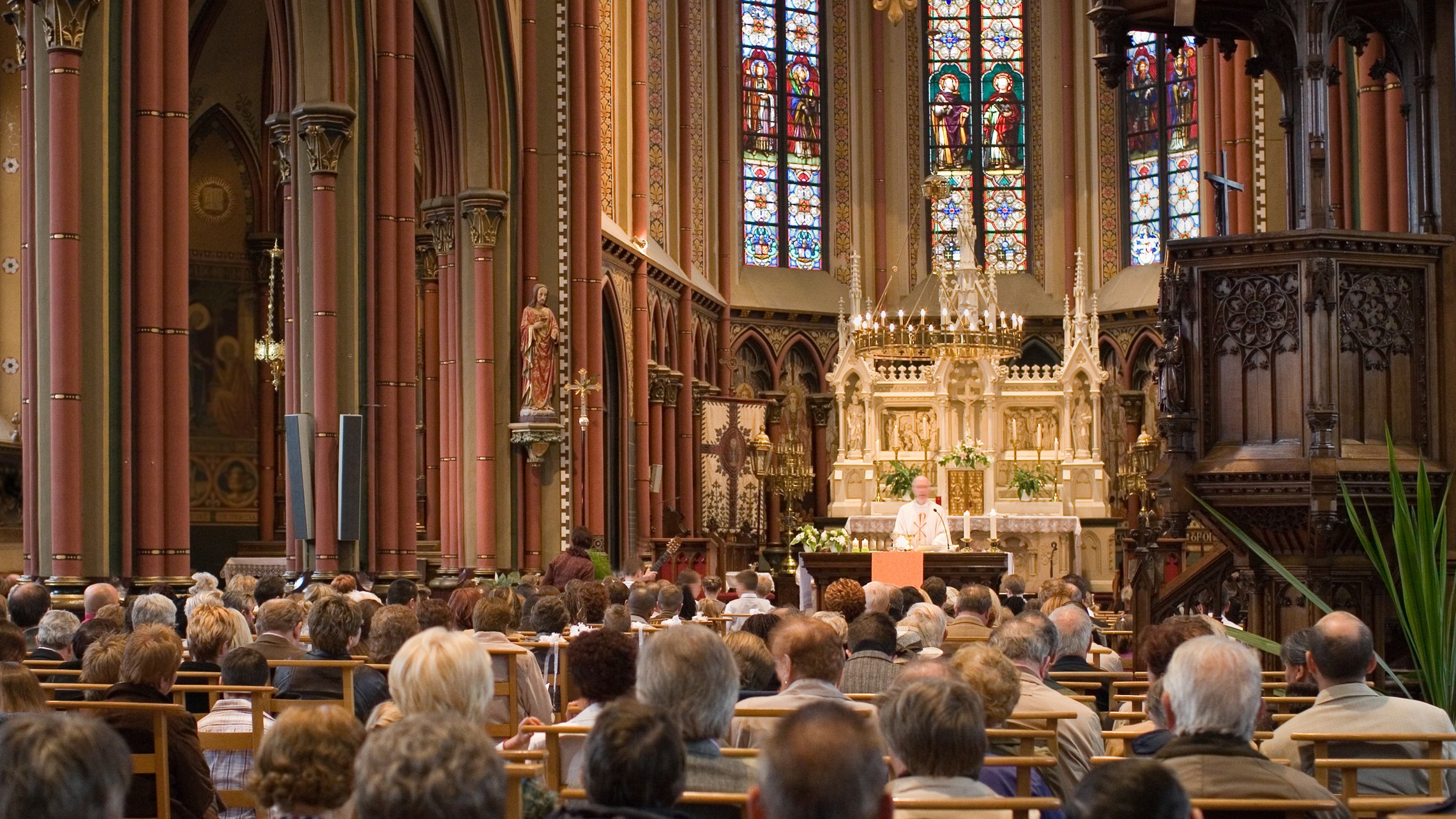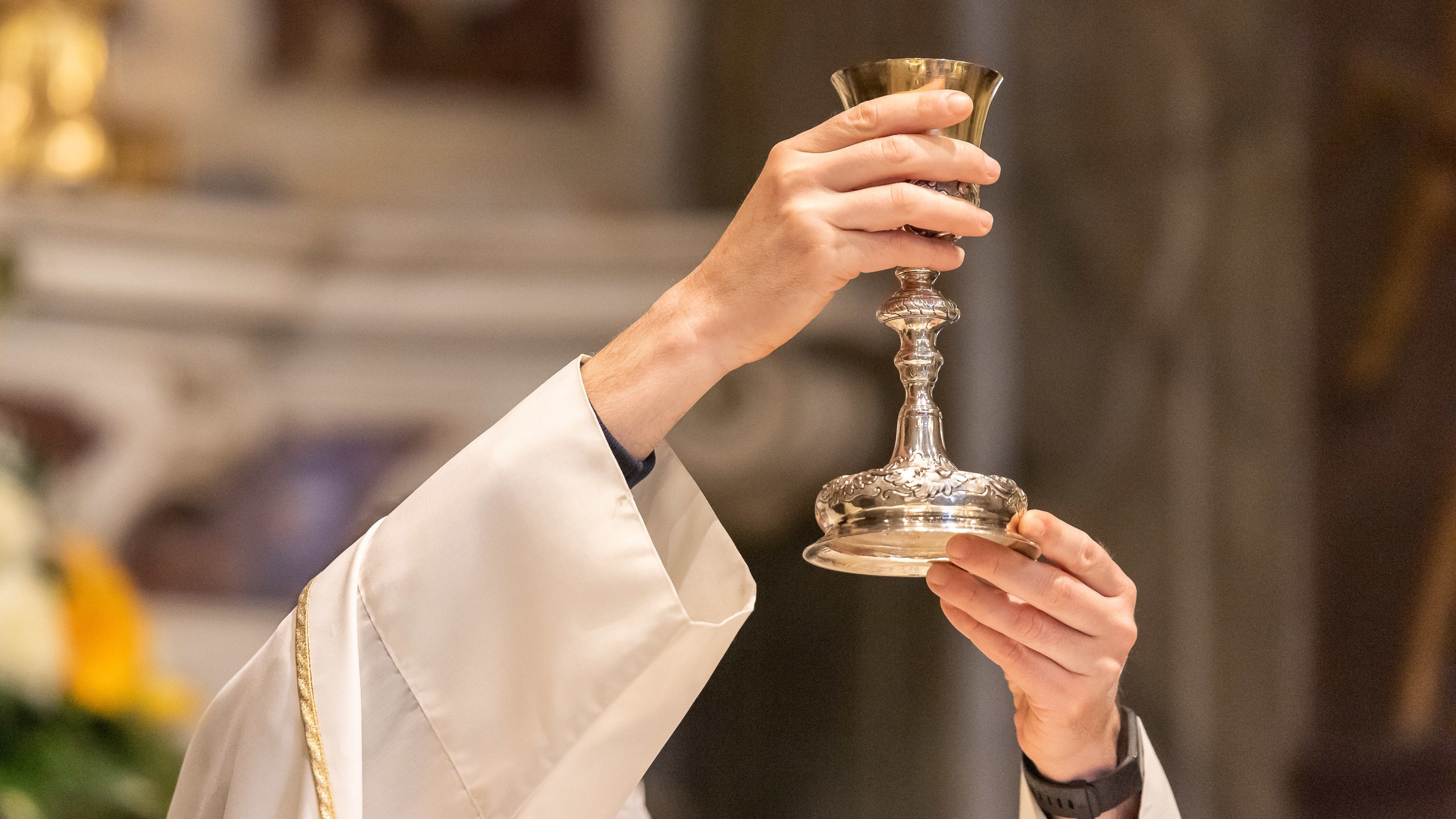THE MISADVENTURES OF LARRY GOODWIN

Believing in the Eucharist before believing in God
The Misadventures of Larry Goodwin
How he believed in Transubstantiation before he believed in God
Fr. Frederick Edlefsen
Larry Goodwin graduated from Blue Valley High School in Overland Park in 1988. He was a lost soul. Known only to God and his mother, he was in fact the brightest kid in the Kansas City metro area, though he officially ranked in the bottom 30% of his class. But he was at the top 90% of the bottom 30%. So he graduated. He bombed the SATs, but not badly enough to be rejected by Friends Liberal University of Northern Kansas. To folks who knew of the school, which wasn’t many, it was informally known as “Friends University” or “Friends U” or “FU” or just “Friends.” The Kansas City Star did an extensive write-up on the university for its 10th anniversary in 1978. But an unfortunate typo in the third paragraph referred to it as “Fiends University.” It was a PR disaster. Word got round. Locals who’d never heard of the school knew it now. For two years, wisecracks swirled among Kansas City area high school guidance counselors and administrators. One Principal, trying to motivate a flagging senior in the fall of ’78, sardonically quipped, “You don’t want to end up with Fiends, do you?” Enrollment dropped by 12%. But it recovered after the Reagan landslide in 1980. Disillusioned hippie types flocked to the school, spiking enrollment by 20%. By the late ‘80s, however, there weren’t enough hippies in the Kansas City area to form a collegiate subculture. The Bellamy Brothers were putting out country hits in those days, like, “He's an old hippie / And he don't know what to do / Should he hang on to the old / Should he grab on to the new…” But a new demographic was on the way: bright but aimless suburbanites, like Larry Goodwin. Friends had a new lease on life.
Founded by progressive Quakers in ‘68, Friends had no Quaker identity by ‘78. When Larry arrived in ‘88, the university had just put together an “Identity Search Committee” charged with, among others things, picking a mascot and school colors, and finding a new name. In order to attract suburban misfits, they wanted to shore up a more “college feel,” which included selling swag like baseball caps and sweatshirts, which the school had never done before. The move was controversial because, to those who preferred hippie motifs, the university was caving to the Reagan Revolution. Nonetheless, the university’s new name would be key. The old acronyms were problematic.
In his senior year at Blue Valley, Larry made a D+ in physics. But actually, he was better at it than Diane Bickford, his classmate who scored 100% on every science quiz, test, exam and project in all her four years at Blue Valley. For example, Larry loved building rockets. And he was darned good at it. He read up, somewhat, on the subject. But he was mostly inspired by daydreams, imagination, intuition, bird watching, pheasant hunting, staring at his backyard sweet corn, looking at spaceship photos and reading sci-fi comic books. From all that, he figured out how rockets worked. And how to build one. He bought a book entitled “Build Your Own Rocket” at Barnes & Noble, just to add some precision to his imagination. Larry’s dad, a Cargill executive, wasn’t worried about the expenses. So Larry bought plenty of rocket materials and got it right on the fifth try. His four-foot missile apparently topped 3,000 feet. He found this out because he launched it from Tiffany Springs Park, just south of Kansas City International Airport. An American Airlines pilot en route to Dallas called it in to traffic control, and Larry was arrested. However, he was let off without penalties because he promised not to do it again. To law enforcement, he was clearly a brilliant yet innocent, lonely, absent-minded teenager.
Larry never took a music lesson and couldn’t read a note. But he was a self-taught virtuoso on guitar. If he heard it, he could play it. To boot, he had a voice like Merle Haggard. At the Blue Valley talent show, he sang Haggard’s “Mama Tried” playing electric guitar and brought the house down, screaming girls and all. “I turned twenty-one in prison doing life without parole / No one could steer me right but Mama tried, Mama tried, Mama tried…” Students stomped the bleachers, yelling, “More! More!” So, without plan or approval – off the program – he spontaneously performed Bobby Bare’s drunken shtick, “The Winner:” “Here I wi’ a hulk o’ a man with a beer in ‘is hand he looked like a drunk ol’ fool / Well’I knew if I hit him right why I could knock him off of that stool …” The crowd roared. Girls swooned. Faculty glared stoically. Jocks were wondering. Larry was bug-eyed, awkward and lanky, with long skinny bowlegs like warped stilts, sporting a shock of hair porcupining in every direction, like an electrocuted asparagus.
The funny thing about Larry is that he did well at everything he wasn’t self-conscience about. It never occurred to him that playing piss-and-vinegar country ditties would excite peers, give girls a crush, bemuse jocks and unnerve faculty and turn his gawky-flunky self into a star. It never occurred to him that his rocket would almost down a 727. But it did. No ego involved. No posturing. Larry did what he did because he wanted to. He was who he was. His self-esteem – relative to social expectations – was so low that he felt he had nothing to lose in doing what he wanted without trying impress anyone, not even himself.
When Larry started at Friends, he hadn’t a clue about a major or what classes to take. So Friends was a perfect fit. Majors weren’t taboo. It had a program called a “path” – not exactly a “major,” but you could get a diploma for it – entitled “Non-Directive Studies” (NDS). It was part of the school’s progressive experimental outlook, comprised mostly of electives. NDS students would “define” their own “path.” According to the 1988 catalogue, NDS was “beyond the cutting edge” and “way ahead of the future.” This outlook attracted an exceptionally unconventional faculty, more so than Berkeley or Brown, which afforded Larry the opportunity to take the following eighteen-hour NDS “elective path” in his first semester:
Religion 108: Eclectic Christian Phenomena
Philosophy 101: From Carl Jung to Allen Ginsberg
Fine Arts 105: Beyond Human: Rare Dance Moves
History 103: Ancient Mesopotamian Liberation Movements
Psychology 108: Insanity and Creativity
Physical Education 101: Calisthenics, Eurhythmics and Medicinal Marijuana
Larry got a job at McDonald’s. He didn’t need the money. But he wanted it anyway. He didn’t know why. He was open to anything. Then something happened in late October. He was playing around with the electronic stacks in the library, installed to maximize shelving space. Press a button, and a row of book stacks would roll open as another would close in. Larry noticed that one aisle wasn’t opening easily, so he kept pressing the button – again and again – until finally the aisle haltingly rolled opened up, like a rusty old wheel. A musty odor overtook the area. Larry sneezed. And a row of old books appeared. Most books in the Friends library were published in the ‘60s or later. But not in this aisle. He waked in and spotted what seemed to be the oldest of all the books. It looked as if it would disintegrate upon touch. The dark brown cover was dusty and brittle, and the pages were yellow and some were falling out. A strip of thick black tape held the binding together. It was a single, lonely volume called The Third Part, like a last surviving triplet, published in 1911. It had never been checked out. “How did it get here?” thought Larry. The title was Summa Theologica by a Thomas Aquinas. He randomly opened it to somewhere in the middle. The top of the page said, Question 75. “What on earth is Question 75?” The subtitle just said: “The change of bread and wine into the Body and Blood of Christ.”
You might say Larry was an agnostic. But that thought never occurred to him. He just knew he was intrigued by Question 75 because it wasn’t really a question, nor even a sentence, but a phrase: “The change of bread and wine into the Body and Blood of Christ.” It was followed up by a series of eight questions called “Articles” about “bread and wine” changing into the “Body and Blood of Christ.” His read part of Article 1, which asked, “Whether the body of Christ be in this sacrament in very truth, or merely as in a figure or sign?” He looked down the page to this paragraph: “I answer that, The presence of Christ's true body and blood in this sacrament cannot be detected by sense, nor understanding, but by faith alone, which rests upon Divine authority. Hence, on Luke 22:19: ‘This is My body which shall be delivered up for you.’ Cyril says: ‘Doubt not whether this be true; but take rather the Saviour's words with faith; for since He is the Truth, He lieth not.’”
Though Larry didn’t know who Cyril was, or what a sacrament was, he intuitively got it – like the rocket and the guitar. To Larry, the idea that something “cannot be detected by sense, nor understanding, but by faith alone” figured. He brought the book to his class on Eclectic Christian Phenomena and read the passage from Question 75. Everyone listened. The professor said, “We don’t talk about divine authority here. We talk about experience.” Larry replied, “But not-understanding is an experience of divine authority.” The professor blankly stared. Larry continued. “I do what I do and trust what I don’t know. How’s that different from resting on what some call divine authority?” The prof was smart enough not to answer. Then Larry asked, “Why wouldn’t bread and wine become the Body and Blood Christ? Whoever that is.”
Categories:



